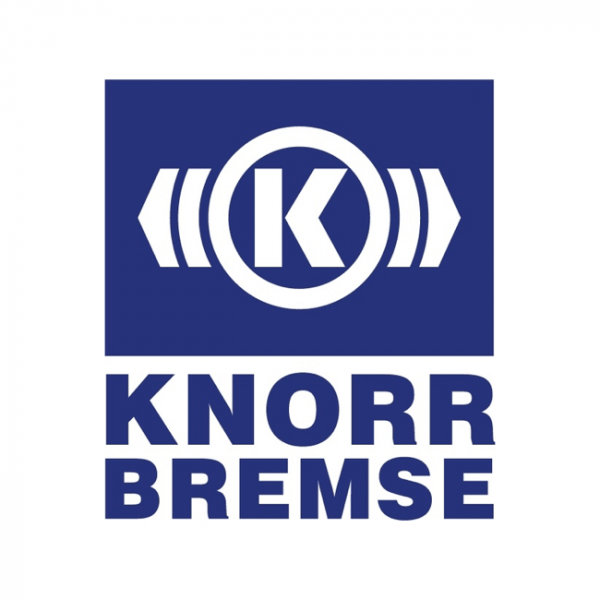Knorr-Bremse is the global market leader in braking systems and a leading supplier of other rail and commercial vehicle systems. Knorr-Bremse’s products make a decisive contribution to greater safety and energy efficiency on rail tracks and roads around the world. About 29,000 employees at over 100 sites in more than 30 countries use their competence and motivation to satisfy customers worldwide with products and services. Knorr-Bremse delivers braking, entrance, control and auxiliary power supply systems, HVAC and driver assistance systems for rail vehicles, as well as braking, steering, powertrain and transmission control solutions, and driver assistance systems for commercial vehicles.
At-a-Glance
A fourth industrial revolution is powering a new wave of innovation, and emerging digital technologies look set to dramatically transform manufacturing operations worldwide. To stay ahead of the game, Knorr-Bremse used Raspberry Pi and SUSE Linux Enterprise Server (SLES) for ARM to build an IoT platform that will collect data from manufacturing machines in real time, enabling the company to accelerate failure responses, reduce unplanned downtime, improve factory-floor maintenance and increase production efficiency.
The Challenge
We are currently experiencing the Fourth Industrial Revolution. Emerging digital technologies such as automation, artificial intelligence, big data analytics, the Internet of Things (IoT) and robotics are transforming the way manufacturers operate—and Knorr-Bremse is no exception.
Amann, team leader technology at Knorr- Bremse Truck Division, begins: “We are always looking at how we can best harness new technologies to help maximize production efficiency, reduce downtimes and increase productivity. But to do this, we first need to make our factories ‘smarter’.”
Knorr-Bremse recognized that to launch Industry 4.0 initiatives, it needed the ability to collect factory-floor data in real time. Modern manufacturing machines produced in the last 10 to 15 years automatically capture reams of information, such as the machine state (running, idle, unplanned down, planned down, off), error codes, part count, temperature, humidity, pressure. Older machines, however, do not.
Amann comments: “Because product lifecycles are long in our industry, up to 20 to 30 years, so is the lifecycle of our manufacturing equipment. Many of our machines are over 15 years old and therefore do not have advanced data collection capabilities—so many things are done manually. Operators, technicians and engineers regularly inspect the machines and note down their observations. Reporting is done using pen and paper or spreadsheets.”
To optimize manufacturing operations, Knorr- Bremse needs real-time insight into how its older machines are performing, too.
“We wanted a small, inexpensive data collection system that we could simply plug into the machines to gather the information we needed,” says Amann. “After looking at the commercial solutions available and finding that none met our requirements, we decided to build our own.”
“A community-supported Linux distribution would not provide the required infrastructure and support, leaving our network at risk. We wanted an enterprise-grade solution, and SUSE was the obvious choice.”
SUSE Solution
Knorr-Bremse chose to use Raspberry Pi devices to collect data from manufacturing machines. The small, inexpensive single-board computers are ideal for building connected IoT solutions. Next, the company selected SLES for ARM as the operating system to support its innovative Raspberry Pi project.
Helmut Triller, IT director backend & cloud services at Knorr-Bremse, remarks: “We have very strict IT security controls in place, so using a community-supported Linux distribution as the operating system was not an option for us. Such a solution would not provide the required infrastructure and support, leaving our network at risk. We wanted an enterprise-grade solution, and SUSE was the obvious choice.”
Claudia Bruckmeier, team lead infrastructure services at Knorr-Bremse, adds: “SUSE is our preferred Linux distribution. We run our mission-critical SAP applications on SUSE Linux Enterprise Server for SAP Applications, so we know from experience that it’s a secure, stable, reliable platform. We also enjoy a long-standing relationship with the SUSE team, who are always there for us to provide advice and support.”
Specifically optimized for ARM processor-based systems, SLES for ARM ensures high performance levels and delivers a built-in image for the Raspberry Pi—helping Knorr- Bremse to hit the ground running with its IoT project. The company was quickly able to create its own unique graphical user interface for the Raspberry Pi devices.
With the SUSE solution, Knorr-Bremse also benefits from regular software updates and security patches, ensuring that sensitive factory-floor data remains secure.
The Results
Today, Knorr-Bremse is in the process of rolling out its first fleet of Raspberry Pi devices at one factory, with several more rollouts planned for the near future.
Amann elaborates: “We are going to roll out the solution on a plant-by-plant basis, with the goal of implementing the IoT solution in all our facilities worldwide.”
With its new real-time data monitoring capabilities, Knorr-Bremse expects production efficiency to soar.
Amann concludes: “We will be able to take immediate action to resolve issues such as overruns and bottlenecks, preventing breakages and unplanned downtime. Rather than sifting through paper reports, all the data will be available in a single repository for analysis, which will enable us to optimize production processes and increase efficiency even further.”
